Recent Articles
Popular Makes
Body Types
Traveling with a Car Seat on an Airplane
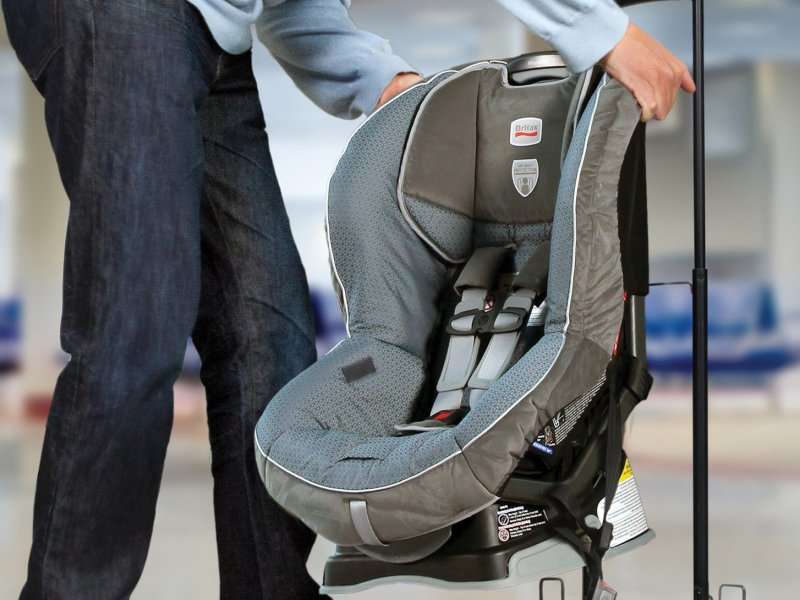
silver carseat ・ Photo by Diapers.com
The kids are back in school, but before you know it, it will be time to go off on your next family vacation. If you’ll be traveling by plane, there are some special considerations to keep in mind if you will be bringing along kids age 12 and under. Namely: you’ll probably need to bring a car seat. Here’s some advice to make that process go smoothly so that you can all arrive safely and enjoy your trip.
Lap babies are a bad idea
It sounds great to save some cash by having your child under age 2 ride in your lap rather than purchasing their own ticket. However, while this is allowed by the airlines, it is actually very dangerous to your child and to the other passengers. In severe turbulence, your baby can be pulled from your arms with several hundred pounds of force and be seriously injured or killed, or cause injury to someone else on the plane. The FAA strongly recommends against lap babies, as does the American Academy of Pediatrics. They advise bringing your child’s car seat on board to install on the baby’s own plane seat for them to ride in.
When you think about it, everything and everyone on the plane is required to be restrained during taxi, takeoff, landing, and turbulence. Laptops, coffee carts, bags of peanuts…it is only babies under age 2 who are allowed to be unbuckled during those times. Your baby deserves the same safety measures as any other passenger. Their safety is worth the money.
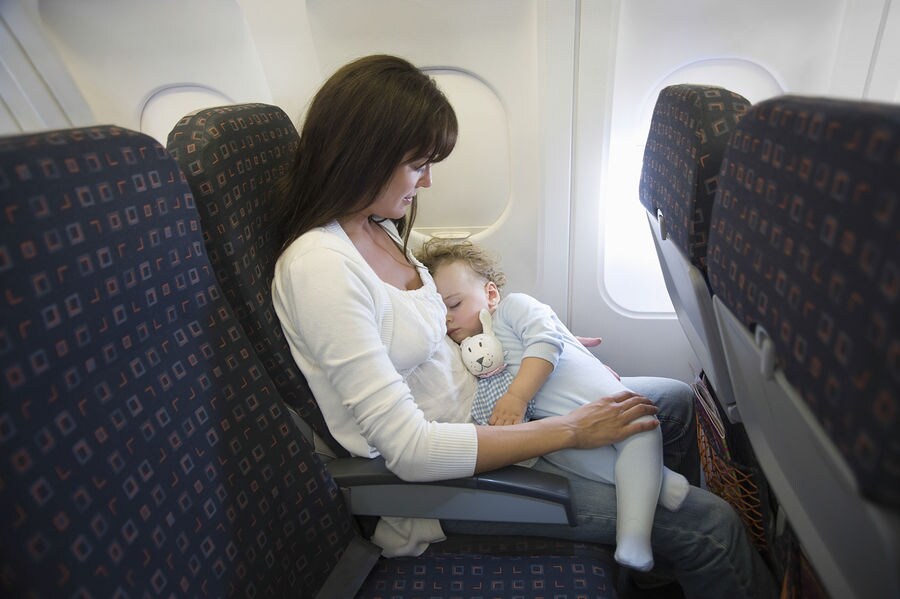
Renting a car seat is an even worse idea
Rental car companies sometimes offer the option to pay extra to rent a car seat from them. That does sound like an easy solution since you aren’t supposed to check it with your luggage (see the next page for why). Renting a seat is actually a huge gamble in several ways. First, you know how sometimes you reserve a compact car and when you arrive, they say they’re out of those, and give you a full size instead? That could happen with a car seat too—but it would be more like, “We’re out of infant seats, so here’s a backless booster for your six-month-old to ride in.” Second, you won’t know the history of the seat you get. It could have been crashed, tossed out a window, thrown up on yesterday, etc. It could be expired or missing instructions for how to safely install it. Plus, some of the seats offered by rental car companies are just plain old, dirty, and gross.
Some people do wind up with what are probably perfectly safe seats from rental car companies, but rental seat horror stories are not hard to come by. Don’t risk your child’s safety. Especially when you add up the daily charges for renting the seat, renting one just isn’t worth it in any way.
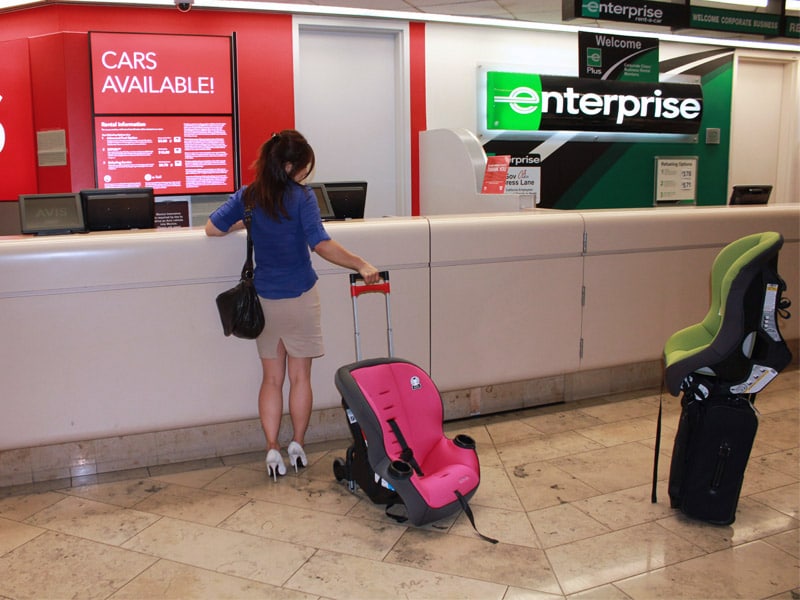
Photo by Stock Photo
Never check a car seat with luggage
When you check a car seat—even in a padded bag, even gate checking, even if it comes back with no visible damage—you are no longer in control of what happens to it. Seats that have been checked may have incurred significant damage without your knowledge. They’re often not treated any more carefully than any other luggage, and we all know what can happen to your regular suitcases over the course of a plane trip. This video should give you an idea of what I’m talking about.
In addition to potential damage, there’s the chance that your seat will get lost by the airline. That wouldn’t exactly get your vacation off to the greatest start.
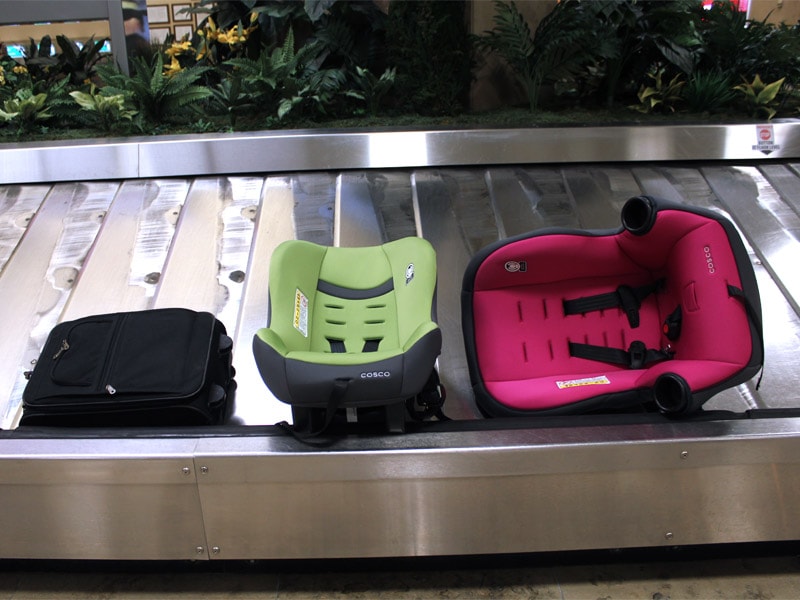
Wheels, backpacks, and carriers are your friends
Now that you understand the importance of bringing your child’s car seat on the plane, you’re probably wondering how you will ever lug that thing through the airport with your child and all your other belongings. It can be done! For infant carrier seats, you may find it easiest to put the seat in a compatible stroller and wheel it along. With convertible seats, you can purchase a cart specifically designed to attach your seat to, essentially turning it into a stroller.
There are plenty of other possibilities; you can wear your small baby in a carrier, buy a car seat travel bag with backpack straps, or attach it to a rolling suitcase. Shop around online and you will find dozens of products intended to make it easier to bring your car seat with you when traveling. No one option will work for everyone, so go with what seems most manageable to you.
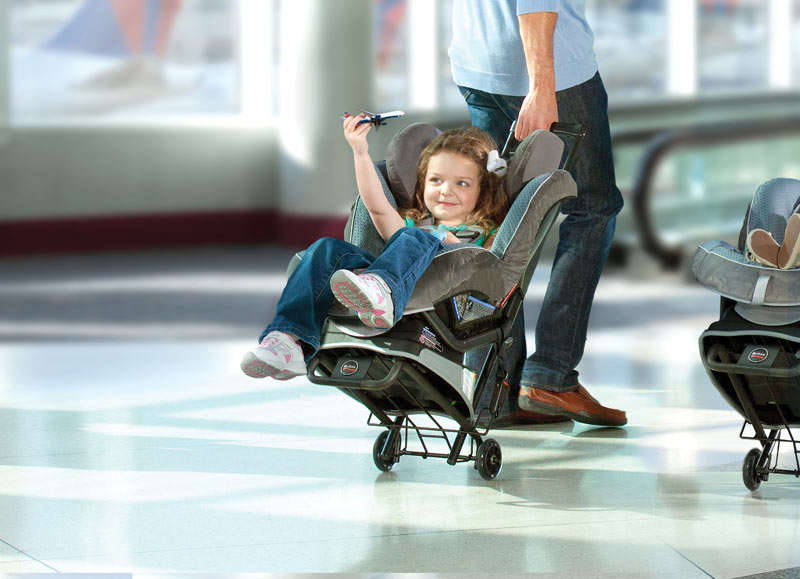
Check your airline’s rules
US-based airlines are required to allow you to use your FAA-approved child restraint on board (provided you have purchased a ticket for the child). Foreign airlines are under no obligation to be so accommodating, and many are not at all car seat friendly. The blog Kids on a Plane has compiled a handy list of each airline’s policies when it comes to babies, children, and car seats.
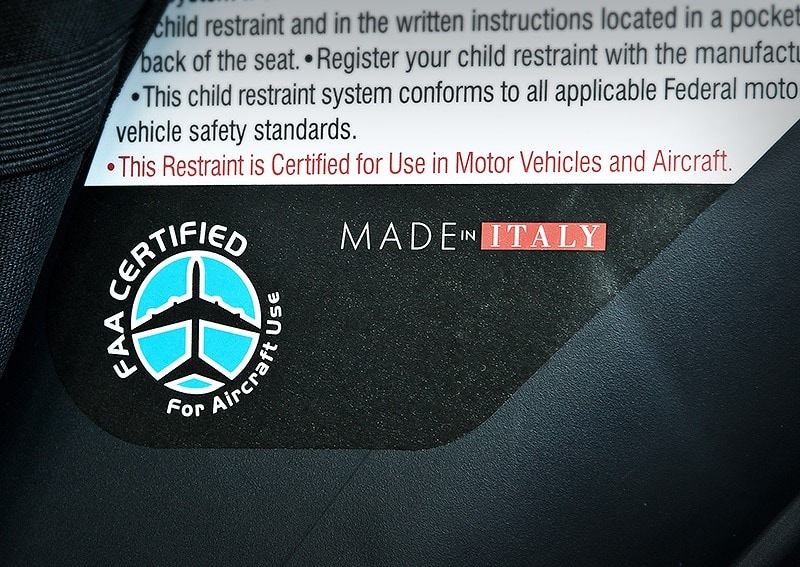
Know your (and your child’s) rights
Some airline employees are also decidedly “unfriendly” about traveling with car seats. I have heard multiple stories of flight attendants insisting that the car seat cannot be used on the plane (when in fact the airline does allow it), or telling a parent that they have to put their infant’s seat forward-facing, which goes against the seat manufacturer’s instructions. Please note that airlines based overseas are under no obligation to follow these regulations, although some do.
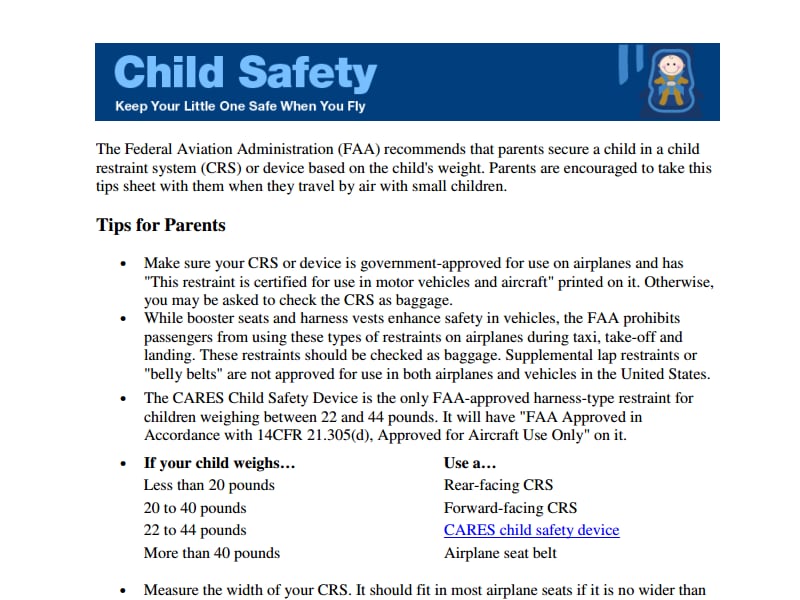
Restraints designed for travel
Most child car seats, except booster seats, sold in the United States are FAA approved. Look for a sticker on your seat that says “This restraint has been certified for use in motor vehicles and aircraft.” If you’ll be riding in a car at your destination, you’ll probably want to bring your car seat on the plane anyway, but if you won’t need a seat once you land—or if a trusted friend or relative will be providing one—you can look into whether a CARES harness would be suitable for your child. It is currently the only restraint other than actual car seats that is FAA approved. Unfortunately, while it is officially for use by children weighing 22-44 pounds, it generally only safely fits children who are close to the upper end of that range, so it has a limited useful life span.
For car travel when you arrive, there are two innovative options to consider. The Ride Safer Travel Vest (pictured above) looks a bit like a life jacket, and attaches to the adult seat belt to function as a restraint for older children. To use it, kids need to be at least 30 pounds and ready maturity-wise for a booster (usually around age 5 or 6). It’s a good option if packing a booster is impractical or if your child is almost, but not quite, ready to ride without a 5-point harnessed seat. The RSTV is not yet approved for use on planes, but is expected to be in the near future.
The BubbleBum inflatable booster seat is also a convenient, portable choice for children who no longer need a harnessed seat, but still require a backless booster for car rides. Most children need a booster until age 10-12.
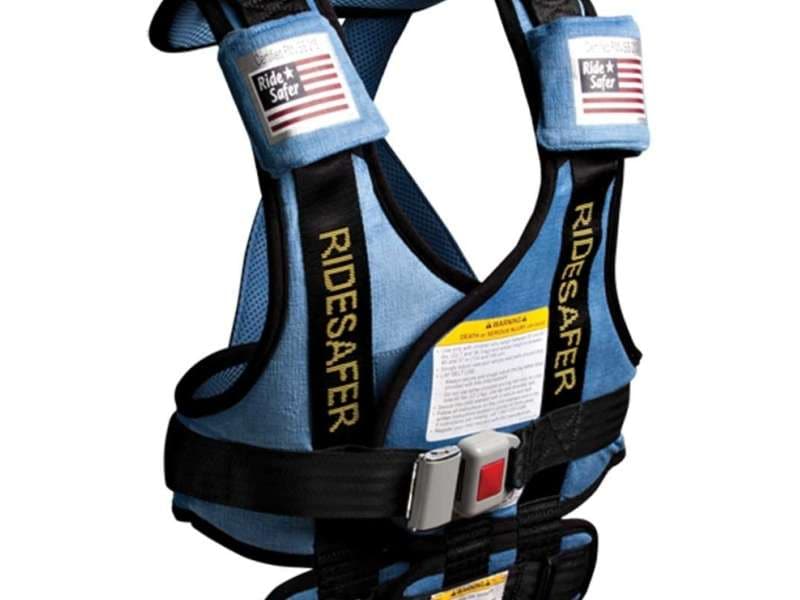
No riding in boosters on planes
Just like you should never use a belt-positioning booster with a lap-only belt in a car, you can’t use one on a plane. They’re not FAA approved, and using them with just a lap belt actually makes the child less safe. Kids should not be riding in cars in booster seats until at least age 5 or 6, but if your child is at least that age, over 40 pounds, and rides in a booster in the car, they can safely travel on the plane in just the adult seat belt. They will still need the booster in the car when you arrive at your destination, so pack that with your carry-on luggage (never check a booster at the counter or gate check it either, just like any other car seat).
Those are the basics of air travel with car seats. It pretty much boils down to this: Your kid needs their own ticket and a car seat on the plane. Bring it on the plane--don’t check it with luggage. Don’t rent a seat. Have a great trip!
